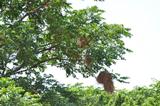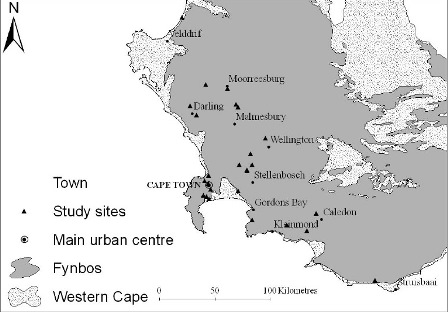Weaver news
| Okanga S, Cumming GS, Hockey PAR. 2013. Avian malaria prevalence and mosquito abundance in the Western Cape, South Africa. Malaria Journal online.
Abstract.
Methods The influence of mosquito abundance and occurrence on the prevalence of Plasmodium spp. in the Ploceidae family (weavers) was examined, taking into account factors with an indirect influence upon mosquito ecology. Mosquitoes and weaver blood samples were simultaneously collected in the Western Cape, South Africa over a two-year period, and patterns of vector abundance and infection prevalence were compared. Dissolved oxygen, pH, temperature and salinity measurements were taken at 20 permanent waterbodies. Rainfall during this period was also quantified using remotely sensed data from up to 6 months prior to sampling months. Results Sixteen wetlands had weavers infected with avian malaria. More than half of the mosquitoes caught were trapped at one site; when this site was excluded, the number of mosquitoes trapped did not vary significantly between sites. The majority of mosquitoes collected belonged to the predominant vector species group for avian malaria (Culex culex species complex). Seasonal variation occurred in infection and mosquito prevalence, water pH and water temperature, with greater variability observed in summer than in winter. There was a significant correlation of infection prevalence with rainfall two months prior to sampling months. Mosquito prevalence patterns across the landscape also showed a close relationship to patterns of rainfall. Contrary to predictions, a pattern of asynchronous co-variation occurred between mosquito prevalence and infection prevalence. Conclusion Overall, salinity, rainfall, and mosquito prevalence and season were the most influential vector-related factors on infection prevalence. After comparison with related studies, the tentative conclusion drawn was that patterns of asynchronous variation between malaria prevalence and mosquito abundance were concurrent with those reported in lag response patterns. From 20 sites, 150 (27%) weavers out of 580 sampled birds were infected with Plasmodium spp.; only 4 sites had no infected birds. 524 mosquitoes were caught from 16 sites, with 345 (66%) caught at Strandfontein. Mosquitoes trapped did not vary significantly between sites. Southern Red Bishops were the most abundant weaver species caught and also were the most heavily infected weaver species, with 26% of caught birds infected. Literature as featured in Weaver Watch news items |











